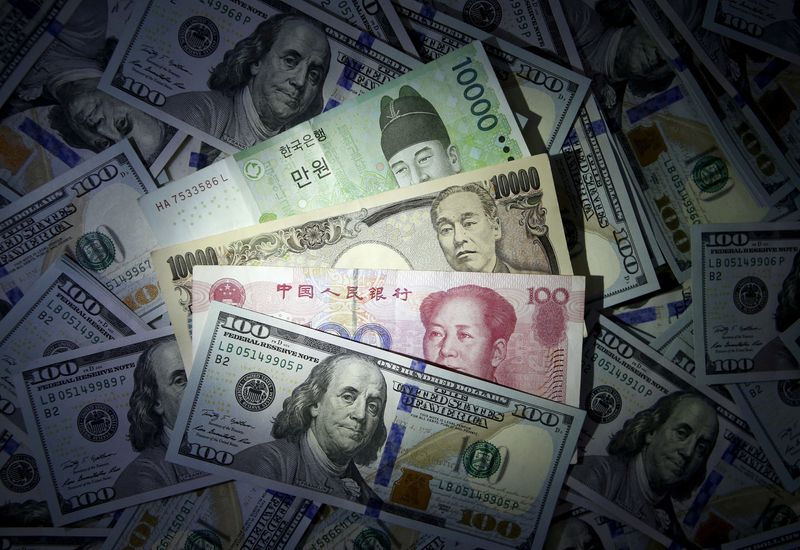By Yoruk Bahceli
(Reuters) - If dramatic losses seen in the first half of 2022 are maintained over the coming months, U.S. and European government bond markets are set for their worst year in decades in another sign the long bond bull-run may be over.
Central banks, after dismissing high inflation as transitory until late 2021, have switched to panic mode, cranking up the speed of policy tightening to stamp out galloping price growth.
U.S. Treasuries, the global fixed income benchmark, have delivered total year-to-date losses of 11%, setting them on course for the worst year on record, according to an ICE (NYSE:ICE) BofA index tracking seven- to 10-year Treasuries since 1973.
That also marks the worst first half performance since 1788, Deutsche Bank (ETR:DBKGn) estimates.
German bonds are down 12.5% and overall euro zone government bonds 13%, seven- to 10-year ICE BofA indexes going back to 1986 show.
"(The bond sell-off) has been completely driven by the shift in central banks' policy and in their rhetoric," said Camille de Courcel, BNP Paribas (OTC:BNPQY)'s head of strategy for G10 rates in Europe.
Bonds of top-rated U.S. and European companies are also deep in the red, down 14% and 12.5% respectively, their biggest losses on record going back to 1997.
Their "junk" peers - rated sub-investment grade - have endured their worst drop since 2008.
U.S. Treasury returns https://fingfx.thomsonreuters.com/gfx/mkt/zdpxoegwlvx/OJmQN-u-s-treasuries-set-for-worst-year-on-record.png
Those moves have blindsided analysts and investors, forcing them to revise forecasts repeatedly. While it's tricky to predict what happens next, most suggest the worst is over for U.S. Treasuries.
BofA and JPMorgan (NYSE:JPM) expect 10-year Treasury yields to rise to 3.50% by year-end from around 3.05% currently, following the year-to-date 155 bps surge.
Others, like Goldman Sachs (NYSE:GS) and BNP Paribas, see yields closer to current levels, at 3.30% and 3.20% respectively. Even if inflation continues to surprise, BNP's Courcel reckons yields may not rise much further, "because at the same time, the market would price larger rate cuts down the line".
Money markets are already pricing in the Fed cutting rates next year..
Asset manager PIMCO also points out yields have reset at levels attractive to long-term investors, and notes the risk that the U.S. Federal Reserve could ignite a recession.
The German outlook is harder to read. The European Central Bank is yet to start raising rates and policy guidance has been far less clear.
BofA expects 10-year Bund yields to end 2022 around current levels, at 1.45%, while JPMorgan, citing the eventual impact of ECB tightening and the fragility of the euro area, expects a fall around 50 bps to 1%.
Goldman Sachs on the other hand expects a rise to 2%, noting that a planned anti-fragmentation tool would allow the ECB to hike rates higher than otherwise and ease the safety premium on Bunds.
10-year bond yields https://fingfx.thomsonreuters.com/gfx/mkt/zgvomdldrvd/bond%20yields%20H1%20june%2029.png
For some, even recession prospects won't make bonds attractive.
Alex Brazier, deputy head of the BlackRock (NYSE:BLK) Investment Institute, expects policymakers to ultimately cave in and salvage economic growth even before inflation, stemming from production constraints and supply squeezes, is tamed.

Bond yields will rise in coming months as central banks tighten policy, says Brazier, a former member of the Bank of England's financial policy committee.
"But it is possible markets are yet to price the persistence of inflation if the Fed changes course," he said, noting either situation meant a poor outlook for bonds.